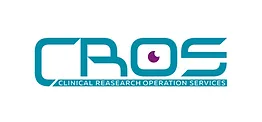Global Parkinson’s Disease market will experience significant growth during the next years; global sales are expected to increase from $3.5B in 2019 to $11.5B in 2029, according to Global Drug and Market analysis of Parkinson’s Disease published by GlobalData.
This growth will be driven by the launch of 17 late-stage pipeline products. The highest selling drugs are expected to be: Roche/Prothena’s PRX-002 followed by Novo Nordisk’s Victoza. PRX-002 is a mAb with disease-modifying properties. KOLs were optimistic about this drug and suggested it may revolutionize PD treatment. Also, the MOA of Victoza was highly regarded as a potential neuroprotective drug in addition to its established high safety profile.
Key Highlights
Current treatments for both early and advanced stage patients focus on controlling the level of dopamine in the brain.
GlobalData’s anticipate that 17 late stage pipeline drugs will launch over the forecast period. These will begin address longstanding unmet needs and are expected to be the main driver of growth in the PD market across the 7MM.
Roche/Prothena’s, a monoclonal antibody, has a novel MOA in the PD market and, if approved, will be revolutionary with potential neuroprotective properties.
The unmet need for therapies for treating late stage complications, such as wearing off, dyskinesia, and psychosis will remain unmet in the 5EU and Japan.
Opportunities are expected for pharmaceutical companies to develop drugs which have novel MOAs; which have potential disease modifying properties.
Key Questions Answered
What are the key PD treatments in 2019?
When will the late stage pipeline products launch, and how will it affect drug sales and the overall PD market in the 7MM?
Which unmet needs will remain unaddressed in the forecast period and what opportunities remain for pharmaceutical companies?
Scope
Overview of PD, including epidemiology, etiology, pathophysiology, symptoms, diagnosis, and disease management.
Annualized PD therapeutics market revenue, cost of therapy per patient, and treatment usage patterns in two patient segments (early and advanced) forecast from 2019 to 2029.
Key topics covered include strategic competitor assessment, market characterization, unmet needs, clinical trial mapping and implications for the PD therapeutics market
Pipeline analysis: comprehensive data assessing emerging trends and mechanisms of action under development for PD therapy. The most promising candidates in Phase IIb and Phase III development are profiled.
Analysis of the current and future market competition in the global PD therapeutics market. Insightful review of the key industry drivers, restraints and challenges. Each trend is independently researched to provide qualitative analysis of its implications.
Reasons to Buy
The report will enable you to –
Develop and design your in-licensing and out-licensing strategies through a review of pipeline products and technologies, and by identifying the companies with the most robust pipeline.
Develop business strategies by understanding the trends shaping and driving the global PD therapeutics market.
Drive revenues by understanding the key trends, innovative products and technologies, market segments, and companies likely to impact the global PD therapeutics market in the future.
Formulate effective sales and marketing strategies by understanding the competitive landscape and by analysing the performance of various competitors.
Identify emerging players with potentially strong product portfolios and create effective counter-strategies to gain a competitive advantage.
Organize your sales and marketing efforts by identifying the market categories and segments that present maximum opportunities for consolidations, investments and strategic partnerships.
Latest post



